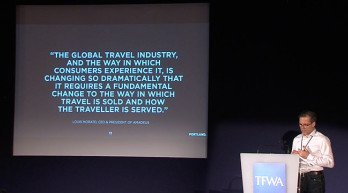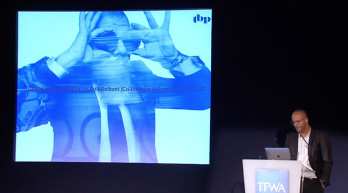

The challenge of increasing footfall is greatest among young millennials and baby boomers, and this figure rises to 61% among both groups. Looking at the issue from a geographical perspective, a larger footfall opportunity exists in the Americas, where 61% of travellers don't go to a duty free store. Barriers to footfall have shifted, Stasiulevicuis continued. Having something else to do is now the most common reason for not visiting a store, while in 2012, it was the second most frequently cited. Getting something to eat at the airport was the most common distraction, cited by 60%, while 39% spent most of their airside time using their smartphones and laptops to check emails and surf the internet. As weight restrictions and limitations of luggage space become more of an issue for many travellers, the need to travel light is also now more pressing for many passengers, and this has risen from the fourth most prevalent barrier to the second.

When looking at what would drive a visit in the future, Stasiulevicuis outlined that 49% said better prices and promotions would encourage them to enter a duty free store, 22% said a better product range would tip the balance, and 20% would be persuaded by exclusive products.
In the second half of the session, Horizon Consumer Science vice president Mike Feely looked at the challenges and opportunities of the Asian cruise retail market. He stated that if Asian cruising continued on its current trajectory, it will be the number two cruise region by 2020. While in 2016 it accounted for 9.2% of global cruise capacity, its capacity is increasing at the fastest rate. Between 2015 and 2016, capacity increased by 32.9%, significantly ahead of Australia and New Zealand, which grew at the next fastest rate with an increase of 19.2%. Chinese cruisers, who already accounted for nearly half (47%) of all passengers in 2016, are expected to increase in number from 1 million in 2015 to 5.4 million in 2020.
The potential to increase spending among Asian passengers is strong, according to Feely. Currently spending among Chinese cruisers stands at only a third of that of their compatriots at airports, while Japanese travellers spend less than half when cruising than they do when flying. The novelty of cruising may, however, hinder shopping, and first-time cruisers (representing 72% of Chinese passengers) tend to spend less than repeaters.
There is potential to capture on-shore spend. Shopping in ports of call comes with high expectations, but time is limited. For many, shopping in port is a necessity because they cannot find what they need on board. 94% of Chinese passengers said shops on board should stock more products for which the countries visited are well known. With passengers spending three or more days on board, there is plenty of time for brands to engage with potential customers.
Children are a missed opportunity, explained Feely, and the presence of children on cruise ships with Chinese and Japanese parents is three to four times higher than air travellers globally. Gift purchases are also an area for possible expansion as two thirds of Chinese and Japanese cruisers purchased at least one gift item, but most had difficulty finding products on the ship that were suitably priced as a gift.



